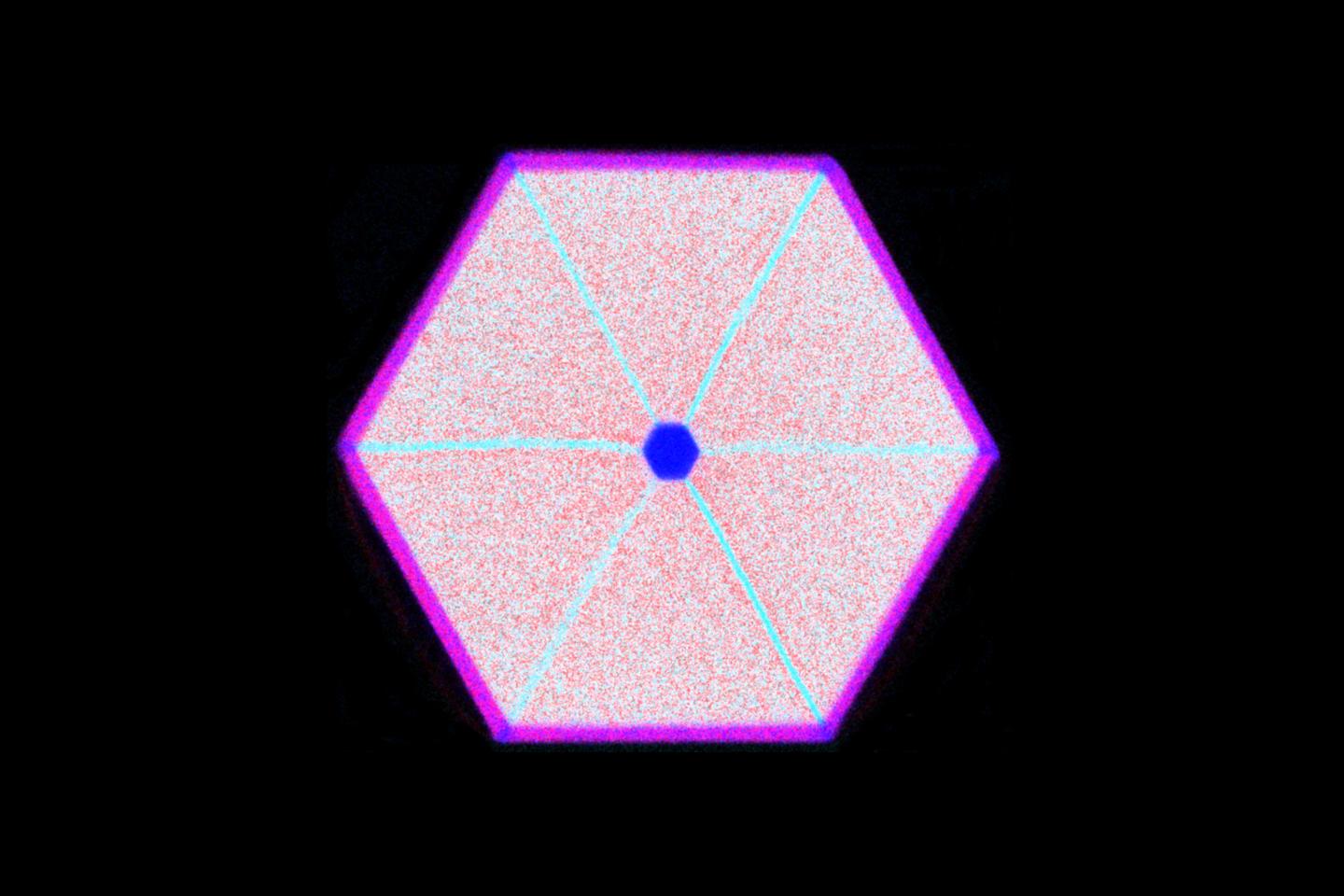Shell structure increases versatility of GaAs nanowires

German team show how semiconductor nanowires can be tuned over wide energy ranges
Nanowires promise to make LEDs more colourful and solar cells more efficient, in addition to speeding up computers. That is, provided that the tiny semiconductors convert electric energy into light, and vice versa, at the right wavelengths.
A research team at the German Helmholtz-Zentrum Dresden-Rossendorf (HZDR) has managed to produce nanowires with operating wavelengths that can be freely selected over a wide range - simply by altering the shell structure. Fine-tuned nanowires could take on several roles in an optoelectronic component. That would make the components more powerful, more cost-effective, and easier to integrate, as the team reports in Nature Communications.
For their study, which lasted several years, the Dresden researchers first set about growing nanowires from GaAs on silicon substrates. The next step involved enclosing the wafer-thin wires in another layer of material to which they added indium as an additional element. Their goal: the mismatched crystal structure of the materials was intended to induce a mechanical strain in the wire core, which changes the electronic properties of GaAs. For instance, the semiconductor bandgap becomes smaller and the electrons become more mobile. To magnify this effect, the scientists kept adding more indium to the shell, or increased the shell's thickness. The result went way beyond expectations.
The picture above shows the cross-section of a nanowire featuring a GaAs core, an InAlAs shell, and an InGaAs capping layer (gallium is shaded blue, indium red and aluminum cyan). The image was produced by energy-dispersive X-ray spectroscopy.
Taking a known effect to extremes
"What we did was take a known effect to extremes," explained Emmanouil Dimakis, leader of the study that involved researchers from HZDR, TU Dresden and DESY in Hamburg. "The seven percent of strain achieved was tremendous."
At this level of strain, Dimakis had expected to see disorders occurring in the semiconductors: in their experience, the wire core bends or defects arise. The researchers believe that the special experimental conditions were the reason for the absence of such disorders: First, they grew extremely thin GaAs wires - around five thousand times finer than a human hair. Second, the team managed to produce the wire shell at unusually low temperatures. Surface diffusion of atoms is then more or less frozen, forcing the shell to grow evenly around the core. The team of researchers reinforced their discovery by conducting several independent series of measurements at facilities in Dresden, as well as at the high-brilliance X-ray light sources PETRA III in Hamburg and Diamond in England.
The extraordinary results led the researchers to undertake further investigations: "We shifted our focus to the question of what triggers the extremely high strain in the nanowire core, and how this can be used for certain applications," Dimakis recollected. "Scientists have been aware of GaAs as a material for years, but nanowires are special. A material may exhibit completely new properties at the nanoscale."
Potential applications for fibre-optic networks
The researchers realised that the high strain let them shift the bandgap of the GaAs semiconductor to very low energies, making it compatible even for wavelengths of fibre-optic networks. A technological milestone. After all, this spectral range could previously only be achieved via special alloys containing indium, which caused a number of technological problems due to the material mix.
High-precision methods are required to produce nanowires. Four years ago, a special system was installed at HZDR for this purpose: the molecular beam epitaxy laboratory. The self-catalysed growth of nanowires from beams of atoms or molecules is achieved in the lab; the beams are directed onto silicon substrates in ultra-high-vacuum. Emmanouil Dimakis played a major part in setting up the lab. Most of the studies reported in the current publication were carried out by Leila Balaghi as part of her doctorate.
'Widely tunable GaAs bandgap via strain engineering in core/shell nanowires with large lattice mismatch' by Leila Balaghi et al; Nature Communications volume 10, Article number: 2793 (2019)

































